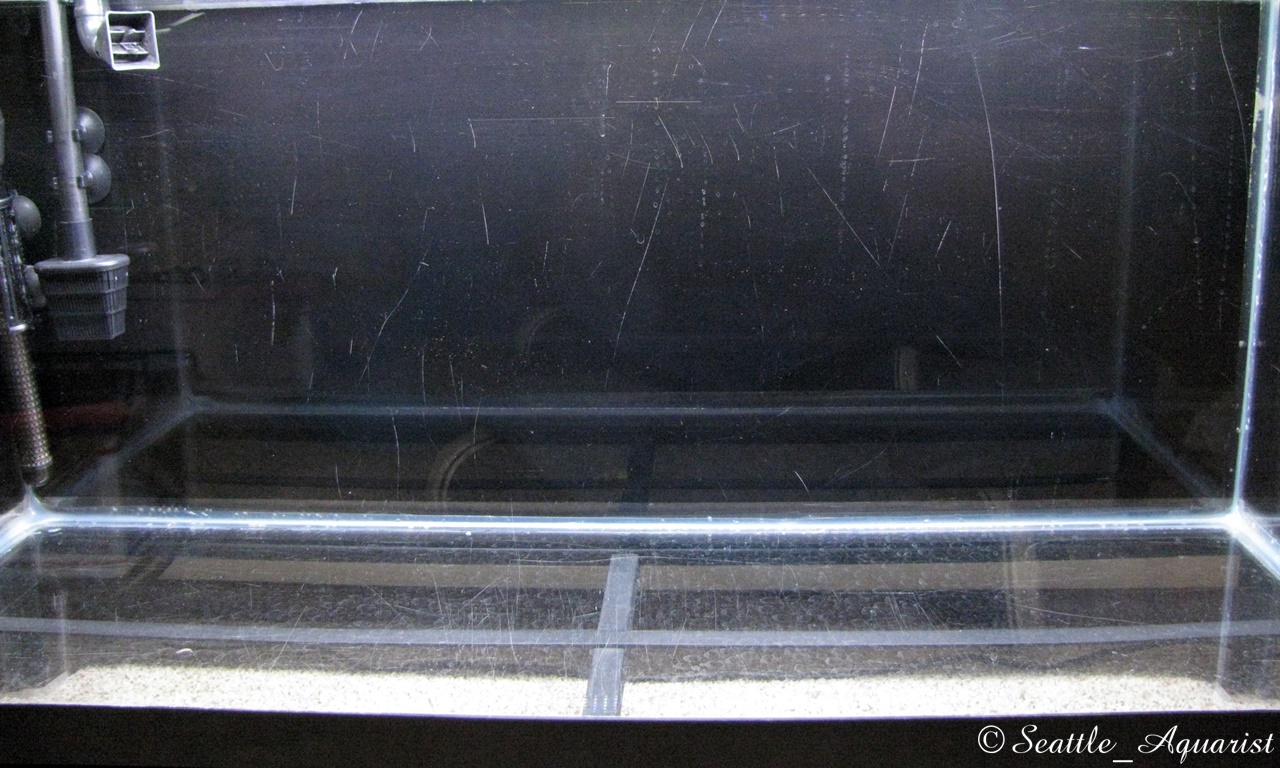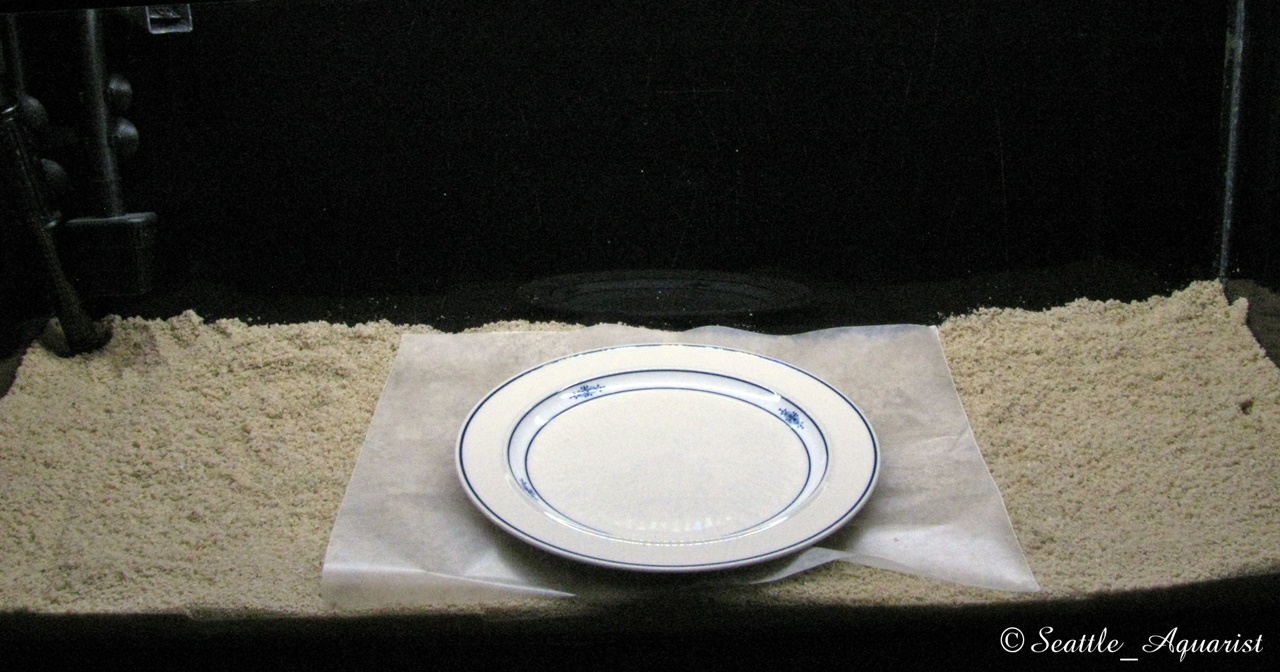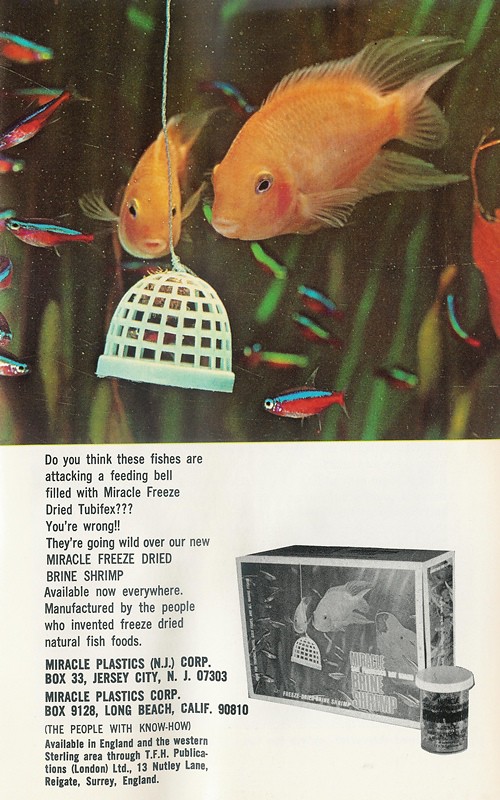Seattle_Aquarist
Well-Known Member
Hi All,
Last weekend I tore down my 30 gallon to make room for a new species (for me). The this will be the first time I have kept the species and from doing some reading, research, and talking with the breeder I am doing a set-up I have not done before.
2020/07/19
Here is my old (15+ years) 30 gallon tank (36"X12.5"X16.75" high). Note the scratches on the glass showing years of use! Thank goodness most of those scratches disappear when water is added.

After cleaning the heater and canister filter I added four (4) Osmocote Plus "00" root tabs. Based upon my experience with the 45 gallon which showed residual ammonia for about 2 months when I used one root tab per 2 gallons I decided to go stingy this time. There will be some species of plants in this tank but the fish will be the primary consideration.

I covered the four tabs with a handful of sand substrate to keep them from shifting and added the rest of the sand substrate.

This is the first time I have used sand as a substrate in a tank and I went with HTH Pool Filter sand which is made from crushed quartz, contains no shells to effect water hardness, and is definitely white! I am not a fan of white substrates because they can show all the detritus and other stuff but I want to keep this tank clean and pristine as possible.

I put in a total of 50# of sand which is one bag. It cost me $9 including tax. This gave me sufficient for 2-1/2 inches in the back of the tank sloping to 1.5 inches in the front of the tank; an average depth of 2 inches. I did not wash or rinse the sand first, it went straight from the bag into the tank.

2020/07/20
Next come the filling. I could have done the three (3) gallon bucket and made eight or nine trips up and down the stairs but I chose to use my weekly water change hose instead. I put down wax paper and a dinner plate to minimize disturbing the substrate during filling and added the water slowly.




This is how it looked when filled before turning on the filter.

I set the heater for 83 degrees and took some tap water readings for a benchmark, then called it a day.
Tap Water
pH = 7.0 (degassed 24 hrs)
dKH = 2.0
dGH = 3.0
Ca = 20 ppm
Mg = 0.9 ppm
NH3 = 0.00
NO2 = 0.00
NO3 = 0.00
And here is the equipment list:
Aqueon 30 gallon aquarium
Aqueon glass top
Fluval 2.0 LED fixture (36"-48")
Marineland C-220 canister filter (two sponges; filter floss; bio-balls X2 trays; Purigen)
50# HTH Pool Filter Sand (crushed quartz) 2-1/2” back / 1-1/2” front
Osmocote Plus root tabs ( 4 each “00” size)
Inline CO2 diffuser
Fluval CO2 drop checker with 4.0 dKH indicator solution
Last weekend I tore down my 30 gallon to make room for a new species (for me). The this will be the first time I have kept the species and from doing some reading, research, and talking with the breeder I am doing a set-up I have not done before.
2020/07/19
Here is my old (15+ years) 30 gallon tank (36"X12.5"X16.75" high). Note the scratches on the glass showing years of use! Thank goodness most of those scratches disappear when water is added.
After cleaning the heater and canister filter I added four (4) Osmocote Plus "00" root tabs. Based upon my experience with the 45 gallon which showed residual ammonia for about 2 months when I used one root tab per 2 gallons I decided to go stingy this time. There will be some species of plants in this tank but the fish will be the primary consideration.
I covered the four tabs with a handful of sand substrate to keep them from shifting and added the rest of the sand substrate.
This is the first time I have used sand as a substrate in a tank and I went with HTH Pool Filter sand which is made from crushed quartz, contains no shells to effect water hardness, and is definitely white! I am not a fan of white substrates because they can show all the detritus and other stuff but I want to keep this tank clean and pristine as possible.
I put in a total of 50# of sand which is one bag. It cost me $9 including tax. This gave me sufficient for 2-1/2 inches in the back of the tank sloping to 1.5 inches in the front of the tank; an average depth of 2 inches. I did not wash or rinse the sand first, it went straight from the bag into the tank.
2020/07/20
Next come the filling. I could have done the three (3) gallon bucket and made eight or nine trips up and down the stairs but I chose to use my weekly water change hose instead. I put down wax paper and a dinner plate to minimize disturbing the substrate during filling and added the water slowly.
This is how it looked when filled before turning on the filter.
I set the heater for 83 degrees and took some tap water readings for a benchmark, then called it a day.
Tap Water
pH = 7.0 (degassed 24 hrs)
dKH = 2.0
dGH = 3.0
Ca = 20 ppm
Mg = 0.9 ppm
NH3 = 0.00
NO2 = 0.00
NO3 = 0.00
And here is the equipment list:
Aqueon 30 gallon aquarium
Aqueon glass top
Fluval 2.0 LED fixture (36"-48")
Marineland C-220 canister filter (two sponges; filter floss; bio-balls X2 trays; Purigen)
50# HTH Pool Filter Sand (crushed quartz) 2-1/2” back / 1-1/2” front
Osmocote Plus root tabs ( 4 each “00” size)
Inline CO2 diffuser
Fluval CO2 drop checker with 4.0 dKH indicator solution

